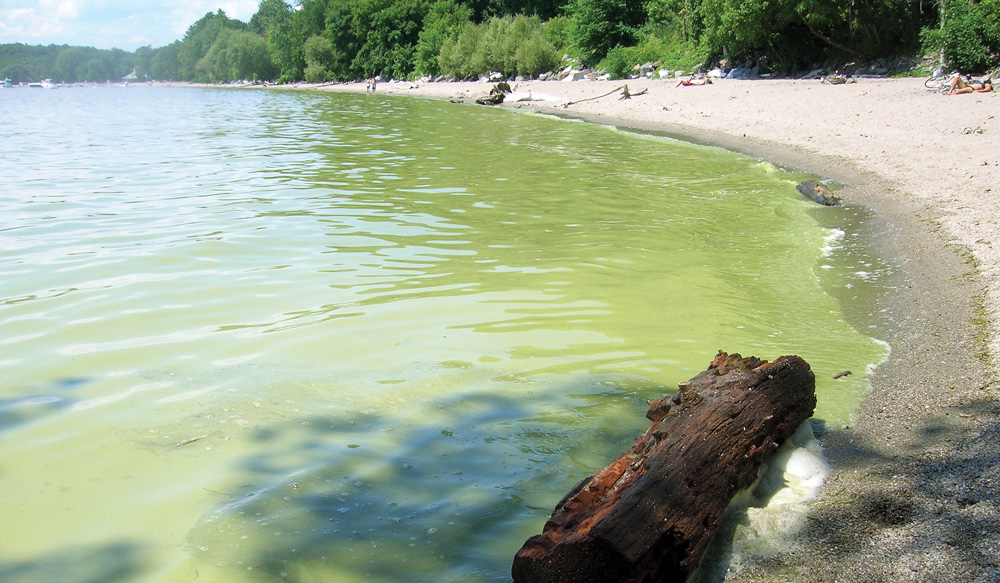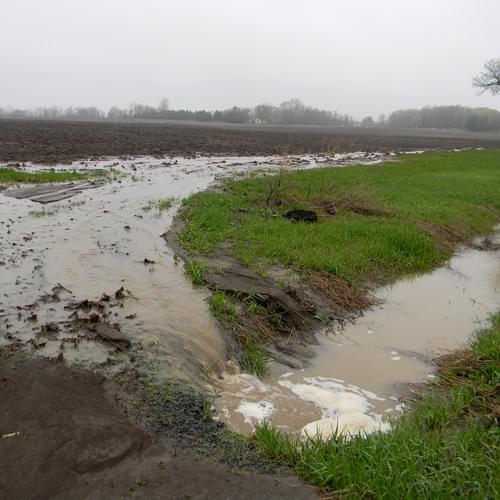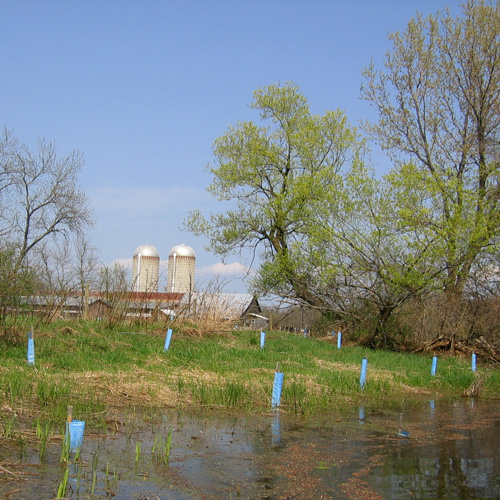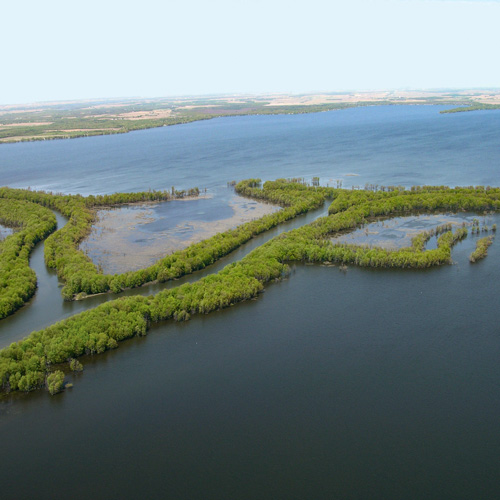Nutrients and Cyanobacteria

Nutrients are a critical part of all lake ecosystems. Aquatic plants and algae require nitrogen, phosphorus, and a suite of micronutrients, but when there is too much of a particular nutrient, certain plants or algae can dominate a system. Phosphorus is one of the primary water quality challenges in Lake Champlain. Excess phosphorus combined with warm temperatures and calm conditions can sometimes result in toxic cyanobacteria blooms.
Nutrient Pollution

Phosphorus is a nutrient that is natural and vital to life, but too much of it in our lakes can lead to excess plant growth and cyanobacteria blooms. Learn more about phosphorus →
Phosphorus Sources

Most of the phosphorus in Lake Champlain comes from runoff from developed areas, lawns, farms, and even forests. Learn more about phosphorus sources →
Phosphorus Reduction Strategies

Efforts to reduce phosphorus are targeted for 13 distinct segments of Lake Champlain. Learn more about phosphorus reduction strategies →
Phosphorus TMDLs

The TMDL is a pollution budget that set limits for the amount of phosphorus that can go into the lake and identifies the reductions needed. Learn more about fishing advisories →
Missisquoi Bay Agreement

The Missisquoi Bay Agreement assigns roles and responsibilities for Vermont and Quebec in reducing phosphorus in Missisquoi Bay. Learn more about the Agreement →
Cyanobacteria

Too much phosphorus combined with warm water temperatures and calm weather conditions can lead to the formation of cyanobacteria blooms. Learn more about cyanobacteria →